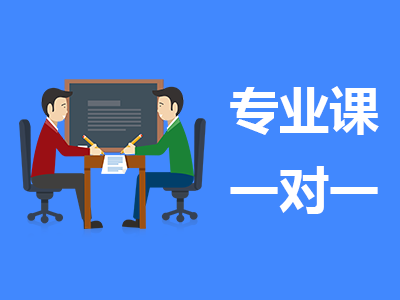I. Vocabulary and grammar (30’)
Section A Multiple choice (20’)
Directions: Beneath each sentence there are four words or phrases marked A, B, C and D. Choose the answer that best completes the sentence. Mark your answers on the ANSWER SHEET.
1. Mr. Jeffrey had just___________ the shell of the boiled crab and was starting to peel it off.
A. cracked B. burst C. fractured D. clanked
2. Last week the bishop preached a farewell sermon to a(n) ___________ that have known him very well since he moved here.
A. congregation B. audience C. progression D. population
3. I don’t doubt ___________ the plan will be well implemented.
A. how B. that C. which D. whether
4. The old woman had an ___________ habit of emptying ash trays out of her upstairs window onto my doorstep.
A. offending B. offensive C. uneducated D. objectionable
5. The physician reassured me that the pain in my leg would ___________ one hour after I took the medicine as I was told.
A. wear away B. wear off C. wear down D. wear out
6. The phone call my parents just gave me aroused a(n) ___________ feeling of homesickness in me.
A. intense B. intensive C. hopeless D. forceful
7. The professor said that he would translate a Chinese fiction if he could find a(n) ___________ to help him proof-read his translation.
A. collaborator B. accomplice C. ally D. confederate
8. Although WildAid has been trying to stop the slaughter of sharks for their fins, current regulations rarely curtail ___________ to the degree needed to restore shark population.
A. sharks are hunted B. the hunting of sharks
C. to hunt sharks D. sharks hunted
9. The mere prospect of a performance of one of their operas was enough to set them to running up bills amounting to ___________ their prospective royalties.
A. ten times the number of B. ten times the amount of
C. the number of ten times D. as ten times as the amount of
10. The ___________ of plastic containers is one of the problems that the local environmental agency has to deal with.
A. disposition B. dispersal C. disposal D. dissolution
11. The forecast predicted ___________ weather with rain, sunshine, thunder and wind and that is just what they have had.
A. fluctuating B. differing C. ranging D. variable
12. The research involves a study of the human heart which leads us through devious mazes of passion, ___________ it is difficult to find a way.
A. of which B. from which
C. out of which D. through which
13. The miserable family have had a ___________ of misfortunes.
A. continuation B. succession C. repetition D. contingency
14. Mr. White would have been more amicable and civilized if he had changed a little bit, ___________?
A. wouldn’t he B. hasn’t he C. didn’t he D. hadn’t he
15. In Japanese cities, traffic jams are ___________ because citizens in suburb have to drive every day to central business areas to work.
A. propagated B. activated C. aggravated D. irritated
16. As an experienced politician, he has to have the ___________ of inspiring confidence in his listeners.
A. fluke B. frenzy C. muse D. knack
17. You had the ___________ situation in which Florida had more listed public bathing beaches than the whole of the United Kingdom.
A. luminous B. luculent C. lubricant D. ludicrous
18. Much of what the lecturer said was beyond her comprehension but she managed to understand the ___________ of his remarks.
A. tact B. tenor C. tanner D. manner
19. Little ___________ about his own safety, though he himself was in great danger.
A. he cared B. he may care C. may he care D. did he care
20. One woman was feared dead last night after a helicopter ___________ off course into an oil platform and ditched into the sea.
A. veered B. instigated C. falsified D. blandished
Section B Proofreading and error correction (10’)
The passage contains TEN errors. Each indicated line contains a maximum of ONE error. In each case, only ONE word is involved. You should proofread the passage and correct it in the following way:
For a wrong word underline the wrong word and write the correct one in the blank provided at the end of the line
For a missing word mark the position of the missing word with a “Λ” sign and write the word you believe to be missing in the blank provided at the end of the line.
For an unnecessary word cross the unnecessary word with a slash “/”and put the word in the blank provided at the end of the line.
EXAMPLE
When art museum wants a new exhibit, (1) When Λ art → an
It never buys things in finished form and hangs (2) It never buys → never
them on the wall. When a natural history museum
wants an exhibition, it must often build it. (3) exhibition → exhibit
Science was once seen as the stuffy domain of pale male
scientists spent far too much of their time in the laboratory (1) __________
concocting potions in test tubes while avoiding sunlight and
human interaction. Occasionally they would venture out of the
lab to give lectures and impart their wisdom with science students. (2) __________
But they would rarely confront with the general public. Now, (3) __________
thanks to the growing number of science festivals, scientists
are engaging with people in unique, innovative—and often surprising—way.
Science communication has evolved in recent years, broken (4) __________
the age-old tradition of the elite scientist imparting knowledge to
the interested layman. Thanks to the increasing emphasis in
academia on public engagement, it is now expected that learning
about science in an open, democratic process—something shaped (5) __________
by professionals, but led by the public.
Today the language of science communication is repleted (6) __________
with words such as create, experience, participate and journey.
It all makes participation in public science feel more like a fun
day out as a classroom chore. (7) __________
Public science events date back to the days of the Ancient
Greeks when the like of Plato and Aristotle would speak in public (8) __________
about their theories of science and philosophy. It was the
Edinburgh International Science Festival which coined the term (9) __________
“science festival” at its incept in 1989. (10) _________
II. Reading comprehension(40’)
Section 1 Multiple choice (20’)
Directions: In this section there are two passages followed by multiple choice questions. Read the passages and then mark your answers on the answer sheet.
Passage A
A Scottish novelist, poet, essayist, and travel writer, Robert Louis Stevenson was born at 8 Howard Place, Edinburgh Scotland, on 13 November 1850. It has been more than 100 years since his death. Stevenson was a writer who caused conflicting opinions about his works. On one hand, he was often highly praised for his expert prose and style by many English-language critics. On the other hand, pothers criticized the religious themes in his works, often misunderstanding Stevenson’s own religious beliefs. Since his death a century before, critics and biographers have disagreed on the legacy of Stevenson’s writing. Two biographers, KF and CP, wrote a biography about Stevenson with a clear focus. They chose not to criticize aspects of Stevenson’s personal life. Instead, they focused on his writing, and gave high praise to his writing style and skill.
The literary pendulum has a swung these days. Different critics have different opinions towards Robert Louis Stevenson’s works. Though today, Stevenson is one of the most translated authors in the world, his works have sustained a wide variety of negative criticism throughout his life. it was like a complete reversal of polarity---from highly positive to slightly less positive to clearly negative; after being highly praised as a great writer, he became an example of an author with corrupt ethics and lack of moral. Many literary critics passed his works off as children’s stories or horror stories, and thought to have little social value in an educational setting. Stevenson’s works were often excluded from literature curriculum because of its controversial nature. These debates remain, and many critics still assert that despite his skill, his literary works still lack moral value.
One of the main reasons why Stevenson’s literary works attracted so much criticism was due to the genre of his writing. Stevenson mainly wrote adventure stories, which was part of a popular and entertaining writing fad at the time. Many of us believe adventure stories are exciting, offers engaging characters, action, and mystery but ultimately can’t teach moral principles. The plot points are one-dimensional and rarely offer a deeper moral meaning, instead focusing on exciting and shocking plot twists and thrilling events. His works were even criticized by fellow authors. Though Stevenson’s works have deeply influenced Oscar Wilde, Wilde often joked that Stevenson would have written better works if he wasn’t born in Scotland. Other authors came to Stevenson’s defence, including Galsworthy who claimed that Stevenson is a greater writer than Thomas Hardy.
Despite Wilde’s criticism, Stevenson’s Scottish identity was integral part of his writing works. Although Stevenson’s works were not popular in Scotland when he was alive, many modern Scottish literary critics claim that Sir Walter Scott and Robert Louis Stevenson are the most influential writers in the history of Scotland. While many critics exalt Sir Walter Scott as a literary genius because of his technical ability, others argue that Stevenson deserves the same recognition for his natural ability to capture stories and characters in words. Many of Scott’s works were taken more seriously as literature for their depth due to their tragic themes, but fans of Stevenson praise his unique style of story-telling and capture of human nature. Stevenson’s works, unlike other British authors, captured the unique day to day life of average Scottish people. Many literary critics point to this as a flaw of his works. According to the critics, truly important literature should translate local culture and stories. However, many critics praise the local taste of his literature. To this day, Stevenson’s works provide valuable insight to life in Scotland during the 19th century.
Despite much debate of Stevenson’s writing topics, his writing was not the only source of attention for critics. Stevenson’s personal life often attracted a lot of attention from his fans and critics alike. Some even argue that his personal life eventually outshone his writing. Stevenson had been plagued with health problems his whole life, and often had to live in much warmer climates than the cold, dreary weather of Scotland in order to recover, so he took his family to a south pacific island Samoa, which was a controversial decision at that time. However, Stevenson didn’t regret the decision. The sea air and thrill of adventure complimented the themes of his writing, and for a time restored his health. From there, Stevenson gained a love of travelling, and for nearly three years he wandered the eastern and central Pacific. Much of his works reflected this love of travel and adventure that Stevenson experienced in the Pacific islands. It was as a result of this biographical attention that the feeling grew that interest in Stevenson’s life had taken the place of interest in his works. Whether critics focus on his writing subjects, his religious beliefs, or his eccentric lifestyle of travel and adventure, people from the past and present have different opinions about Stevenson as an author. Today, he remains a controversial yet widely popular figure in western literature.
1. Stevenson’s biographers KF and CP .
A. underestimated the role family played in Stevenson’s life.
B. overestimated the writer’s works in the literature history.
C. exaggerated Stevenson’s religious belief in his works.
D. elevated Stevenson’s role as a writer.
2. The main point of the second paragraph is .
A. the public give a more fair criticism to Stevenson’s works.
B. recent criticism has been justified.
C. the style of Stevenson’s works overweigh his faults in his life.
D. Stevenson’s works’ drawback is lack of ethical nature.
3. According to the author, adventure stories .
A. do not provide plot twists well.
B. cannot be used by writers to show moral values.
C. are more fashionable art form.
D. can be found in other’s works but not in Stevenson’s.
4. What does the author say about Stevenson’s works?
A. They describe the life of people in Scotland.
B. They are commonly regarded as real literature.
C. They were popular during Stevenson’s life.
D. They transcend the local culture and stories.
5. The lifestyle of Stevenson .
A. made his family envy him so much.
B. should be responsible for his death.
C. gained more attention from the public than his works.
D. didn’t well prepare his life in Samoa.
Passage B
In Britain one of the most dramatic changes of the Industrial Revolution was the harnessing of power. Until the reign of GeorgeⅢ(1760-1820), available sources of power for work and travel had not increased since the Middle Ages. There were three sources of power: animal or human muscles; the wind, operating on sail or windmill; and running water. Only the last of these was suited at all to the continuous operating of machines, and although waterpower abounded in Lancashire and Scotland and ran grain mills as well as textile mills, it had one great disadvantage: streams flowed where nature intended them to, and water-driven factories had to be located on their banks whether or not the location was desirable for other reasons. Furthermore, even the most reliable waterpower varied with the seasons and disappeared in a drought. The new age of machinery, in short, could not have been born without a new source of both movable and constant power.
The source had long been known but not exploited. Early in the eighteenth century, a pump had come into use in which expanding steam raised a piston in a cylinder, and atmospheric pressure brought it down again when the steam condensed inside the cylinder to form a vacuum. This “atmospheric engine”, invented by Thomas Savery and vastly improved by his partner, Thomas Newcomen, embodied outside the coal mines for which it had been designed. In the 1760s, James Watt perfected a separate condenser for the steam, so that the cylinder did not have to be cooled at every stroke; then he devised a way to make the piston turn a wheel and thus convert reciprocating (back and forth) motion into rotary motion. He thereby transformed an inefficient pump of limited use into a steam engine of a thousand uses. The final step came when steam was introduced into the cylinder to drive the piston backward as well as forward, thereby increasing the speed of the engine and cutting its fuel consumption.
Watt’s steam engine soon showed what it could do. It liberated industry from dependence on running water. The engine eliminated water in the mines by driving efficient pumps, which make possible deeper and deeper mining. The ready availability of coal inspired William Murdoch during the 1790s to develop the first new form of nighttime illumination to be discovered in a millennium and a half. Coal gas rivaled smoky oil lamps and flickering candles, and early in the new century, well-to-do Londoners grew accustomed to gas-lit houses and even streets. Iron manufacturers, which had starved for fuel while depending on charcoal, also benefited from ever-increasing supplies of coal: blast furnaces with steam-powered bellows turned out more iron and steel for the new machinery. Steam became the motive force of the industrial revolution as coal and iron ore were the raw materials.
By 1800 more than a thousand steam engines were in use in the British Isles, and Britain retained a virtual monopoly engine production until the 1830s. Steam power did not merely spin cotton and roll iron; early in the new century, it also multiplied ten times over the amount of paper that a single worker could produce in a day. At the same time, operators of the first printing presses run by steam rather than by hand found it possible to produce a thousand pages in an hour rather than thirty. Steam also promised to eliminate a transportation problem not fully solved by either canal boats or turnpikes could cross the hills, but the roadbeds could not stand up under great weights. These problems needed still another solution, and the ingredients for it lay close at hand, in some industrial regions, heavily laden wagons, with flanged wheels, where being hauled by horses along metal rails; and the stationary steam engine was puffing in the factory and mine. Another generation passed before inventors succeeded in combining these ingredients, by putting the engine on wheels and the wheels on the rails, so as to provide a machine to take the place of the horse. Thus the railroad age sprang from what had already happened in the eighteenth century.
6. Which of the sentences below best expresses the essential information in the first passage?
A. Running water was the best power source for factories since it could keep machines operating continuously, but since it was abundant only in Lancashire and Scotland, most mills and factories that were located elsewhere could not be water driven.
B. The disadvantage of using waterpower is that streams do not necessarily flow in places that are the most suitable for factories, which explains why so many water-powered grain and textile mills were located in undesirable places.
C. Since machines could be operated continuously only where running water was abundant, grain and textile mills, as well as other factories, tended to be located only in Lancashire and Scotland.
D. Running water was the only source of power that was suitable for the continuous operation of machines, but to make use of it, factories had to be located where the water was, regardless of whether such locations made sense otherwise.
7. According to paragraph 2, the “atmospheric engine” was slow because .
A. it had been designed to be used in coal mines
B. the cylinder had to cool between each stroke
C. it made use of expanding steam to raise the piston in its cylinder
D. it could be operated only when a large supply of fuel was available
8. In paragraph 3, the author mentions William Murdoch’s invention of a new form of nighttime illumination in order to .
A. indicate one of the important developments made possible by the introduction of Watt’s steam engine
B. make the point that Watt’s steam engine was not the only invention of importance to the Industrial Revolution
C. illustrate how important coal was as a raw material for the Industrial Revolution
D. provide an example of another eighteenth-century invention that used steam as a power source
9. According to paragraph 4, which of the following statements about steam engines is true?
A. They were used for the production of paper but not for printing.
B. By 1800, significant numbers of them were produced outside of Britain.
C. They were used in factories before they were used to power trains.
D. They were used in the construction of canals and turnpikes.
10. According to paragraph 4, providing a machine to take the place of the horse involved combining which two previously ingredients?
A. Turnpikes and canals
B. Stationary steam engines and wagons with flanged wheels
C. Metal rails in road beds and wagons capable of carrying heavy loads
D. Canal boats and heavily laden wagons
Section 2 Answering questions(20’)
Directions: Read the following two passages and then answer IN COMPLETE SENTENCES the questions which follow each passage. Use only information from the passage you have just read and write your answers on the answer sheet.
Questions 1-3
Americans today choose among more options in more parts of life than has ever been possible before. To an extent, the opportunity to choose enhances our lives. It is only logical to think that if some choices are good, more is better; people who care about having infinite options will benefit from them, and those who don’t can always just ignore the 273versions cereal they have never tried. Yet recent research strongly suggests that, psychological, this assumption is wrong, with 5% lower percentage announcing they are happy. Although some choices are undoubtedly better than none, more is not always better than less.
Recent research offers insight into why many people end up unhappy rather than pleased when their options expand. We began by making a distinction between “maximisers” (those who always aim to make the best possible choice) and “satisfiers” ( those who aim for good enough whether or not better selection might be out there).
In particular, we composed a set of statements---the Maximisation Scale---to diagnose people’s propensity to maximize. Then we had several thousand people rate themselves from 1 to 7 (from completely disagree to completely agree) on such statements as “I never settle for second best.”We also evaluated their sense of satisfaction with their decisions. We didn’t define a sharp cutoff to separate maximisers from satisfiers, but in general, we think of individuals whose average scores are higher than 4 (the scale’s midpoint) as maximisers and those whose scores are lower than the midpoint as satisfiers. People who score highest on the test---the greatest maximisers---engage in more product comparisons than the lowest scorers, both before and after they make purchasing decisions, and they take longer to decide what to buy. When satisfiers find an item that meets their standards, they stop looking. But maximisers exert enormous effort reading labels, checking out consumer magazines and trying new products. They also spend more time comparing their purchasing decisions with those of others.
We found that the greatest maximisers are the least happy with the fruits of their efforts. When they compare themselves with others, they get little pleasure from finding out that they did better and substantial dissatisfaction from finding out that they did worse. They are more prone to experiencing regret after a purchase, and if their acquisition disappoints them, their sense of well-being takes longer to recover. They also tend to brood or ruminate more than satisfiers do.
Does it follow that maximisers are less happy in general than satisfiers? We tested this by having people fill out a variety of questionnaires known to be reliable indicators of well-being. As might be expected, individuals with high maximisation scores experienced less satisfaction with life and were less happy, less optimistic and more depressed than people with low maximization scores. Indeed, those with extreme maximization ratings had depression scores that placed them in the borderline of clinical range.
Several factors explain why more choice is not always better than less, especially for maximisers. High among these are “opportunity costs.”The quality f any given option cannot be assessed in isolation from its alternatives. One of the “costs” of making a selection is losing the opportunities that a different option would have afforded. Thus an opportunity cost of vacationing on the beach in Cape Cod might be missing the fabulous restaurants in the Napa Valley. Early Decision Making Research by Daniel Kahneman and Amos Tversky showed that people respond much more strongly to losses than gains. If we assume that opportunity costs reduce the overall desirability of the most preferred choice, then the more alternatives there are, the deeper our sense of loss will be and the less satisfaction we will derive from our ultimate decision.
The problem of opportunity costs will be better for a satisfier. The latter’s “good enough” philosophy can survive thoughts about opportunity costs. In addition, the “good enough” standard leads to much less searching and inspection of alternatives than the maximiser’s “best” standard. With fewer choices under consideration, a person will have fewer opportunity costs to subtract.
Just as people feel sorrow about the opportunities they have forgone, they may also suffer regret about the option they settled on. My colleagues and I devised a scale to measure proneness to feeling regret, and we found that people with high sensitivity to regret are less happy, less satisfied with life, less optimistic and more depressed than those with low sensitivity. Not surprisingly, we also found that people with high regret sensitivity tend to be maximisers. Indeed, we think that worry over future regret is a major reason that individuals become maximisers. The only way to be sure you will not regret a decision is by making the best possible one. Unfortunately, the more options you have and the more opportunity costs you incur, the more likely you are to experience regret.
In a classic demonstration of the power of sunk costs, people were offered season subscriptions to a local theatre company. Some were offered the tickets at full price and others at a discount. Then the researchers simply kept track of how often the ticket purchasers actually attended the plays over the course of the season. Full-price payers were more likely to show up at performances than discount payers. The reason for this, the investigators argued, was that the full-price payers would experience more regret if they didn’t use the tickets because not using the more costly tickets would constitute a bigger loss. To increase sense of happiness, we can decide to restrict our options when the decision is not crucial.
1. What is the aim of the Maximisation Scale composed by the researchers? Who tend to be least happy when making choices?
2. Why were the full-price ticket payers more likely to show up at the performances?
3. According to the passage, what can be done to increase the sense of happiness when making a better choice?
Questions 4-5
The raging battle over SOPA and PIPA, the proposed anti-privacy laws, is looking more and more likely to end in favor of Internet freedom-but it won’t be the last battle of its kind. Although, ethereal as it is, the internet seems destined to survive in some form or another, experts warn that there are many threats to its status quo existence, and there is much about it that could be ruined or lost.
Physical destruction
A vast behemoth that can route around outages and self-heal, the Internet has grown physically invulnerable to destruction by bombs, fires or natural disasters---within countries, at least. It’s “very richly interconnected,” said David Clark, a computer scientist at MIT who was a leader in the development of the Internet in the 1970s. “You would have to work really hard to find a small number of places where you could seriously disrupt connectivity.”On 9/11, for example, the destruction of the major switching center in south Manhattan disrupted service locally. But service was restored about 15 minutes later when the center “healed” as the built-in protocols routed users and information around the outage.
However, while it’s essentially impossible to cripple connectivity internally in a country, Clark said it is conceivable that one country could block another’s access to its share of the Internet cloud; this could be done by severing the actual cables that carry Internet data between the two countries. Thousands of miles of undersea fiber-optic cables that convey data from continent to continent rise out of the ocean in only a few dozen locations, branching out from those hubs to connect to millions of computers. But if someone were to blow up one of these hubs—the station in Miami, for example, which handles some 90 percent of the Internet traffic between North American and Latin America, the Internet connection between the two would be severely hampered until the infrastructure was repaired.
Such a move would be “an act of cyber war,” Clark told Life’s Little Mysteries, a sister site to Livescience.
content cache
Even an extreme disruption of international connectivity would not seriously threaten the survival of Web content itself. A “hard” copy of most data is stored in nonvolatile memory, which sticks around with or without power, and whether you have Internet access to it or not. Furthermore, according to William Lehr, an MIT economist who studies the economics and regulatory policy of the Internet-infrastructure industries, the corporate data centers that harbor Web content-everything from your enemies to this article have sophisticated ways to back up and diversely store the data, including simply storing copies in multiple locations.
Google even stores cached copies of all Wikipedia pages; these were accessible on Jan.18 when Wikipedia took its own versions of the pages offline in protest of SOPA and PIPA. This diversified storage plan keeps the content itself safe, but it also offers some protection against loss of access to any one copy of the data in the event of a cyber war. For example, if power were cut to a server, you may be unable to reach a website on its home server, but you may find a cached version of the content stored on another, accessible server. Or, “if you wanted data that was not available from a server in country X, you may be able to get substantively the same data from a server in country Y.” Lehr said.
Internet arms race
The redundancy of so much online content and of connectivity routes makes the Internet resilient to physical attacks, but a much more serious threat to its status quo existence is government regulation or censorship. In the early days of Egypt’s Arab Spring uprising, the government of Hosni Mubarak attempted to shut down the country’s Internet in order to cripple protesters’ ability to organize; it did this by ordering the state controlled Internet Service Provider(ISP), which grants Internet access to customers, to cut service.
If, in the future, the U.S government sought to shut down or limit Internet access, similar workarounds would crop up, and they would grow more sophisticated as the regulatory methods became more extreme--a “weapon race”, Lehr called it. “The tools for fighting the war are mostly defensive(fire walls, shutting down interconnects, monitoring, locking up folks who have violated laws) but also can be offensive (viruses to attack hostile websites, locking folks up preemptively, etc.)”
In the balance
Bad regulation, be it in any particular country or on the international scale, could severely hamper the Internet’s value and its ability to grow. While some version of the Internet is likely to exist as long as humanity does, what might be lost or greatly diminished is “the openness of the internet”. This openness is useful both economically and socially, but it is also a source of problems. It leads itself to endless security and privacy attacks, junk mail, viruses, malware and so on. New security models must be developed to protect privacy and security while still allowing the Internet to function.
4. What measures could be taken if one country wanted to block another’s access to its share of the Internet cloud?
5. According to the passage, do you think it is possible that the Internet could be destroyed?
III. Writing (30’)
Translating between human languages is something that artificial intelligence has proven to be very competent at. Many people are worried that human translators should be facing up to the stark reality of losing their job to a machine. A few people even pessimistically think we are likely to see gangs of translators rioting in the streets and smashing up the intelligent machines which are threatening their livelihoods as was the case during the first industrial revolution.
Directions:
Write a composition of about 400 words on the ANSWER SHEET, in which you should:
(1) express your opinion on whether artificial intelligence will replace human translators and
(2) give sound arguments to support your view.
Marks will be awarded for content relevance, content sufficiency, organization, and language quality.
Failure to follow the above instructions may result in a loss of marks.



























